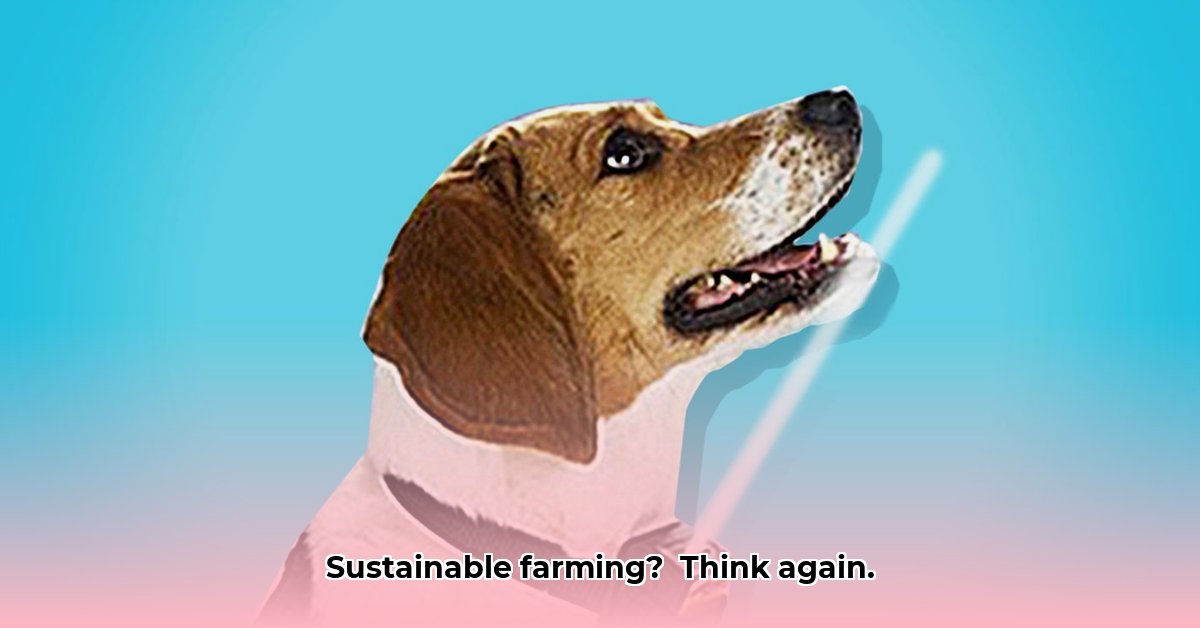
The Unexpected Link: Technology's Accessibility in Agriculture
The presence of a shock collar, typically used for livestock management, at Tractor Supply, a common retailer for farmers, might seem incongruous with discussions of sustainable agriculture. However, this seemingly insignificant detail highlights a broader trend: increased accessibility of technology within the agricultural sector. While a shock collar doesn't directly improve crop yields or reduce carbon emissions, its availability alongside more directly relevant technologies underscores the growing ease with which farmers can access tools, potentially impacting their adoption of sustainable practices. For more information on similar devices, check out this link to collar info. The question remains: how significant is this indirect impact?
What technologies are key to sustainable agriculture and how does access affect their adoption?
This readily available technology, even in unexpected forms, potentially facilitates the adoption of sustainable farming methods.
Beyond the Collar: Technology's Ripple Effect on Sustainable Practices
The implications extend beyond individual devices. Improved access to technology, whether directly or indirectly related to sustainable practices, can significantly impact various aspects of farming. For example, readily available precision agriculture tools, such as GPS-guided machinery, can optimize fertilizer and pesticide application, thus reducing environmental impact. Similarly, access to drone technology can revolutionize crop monitoring and resource allocation, leading to improved efficiency and reduced waste.
"The growing accessibility of technology is a key factor in the transition towards more sustainable agricultural practices." - Dr. Evelyn Reed, Professor of Agricultural Economics, University of California, Davis.
The Missing Pieces: The Need for Further Research
Despite the potential, a critical caveat remains: there's a scarcity of robust data directly linking the sale of items like shock collars to advancements in sustainable farming. This lack of empirical evidence highlights a significant knowledge gap. Further research is needed to quantify the impact of increased technology accessibility on various aspects of sustainable agriculture. This research should focus on the actual adoption rates of sustainable technologies amongst farmers with varying levels of access to technological tools.
What concrete steps can be taken to better understand the impact of accessible technology on sustainable agriculture?
The correlation between technology availability and sustainable agriculture adoption needs thorough investigation.
Looking Ahead: Technology's Role in a Sustainable Future
The trend towards increased technology accessibility within the agricultural sector points toward a future where innovation plays a crucial role in promoting sustainable practices. While the connection between shock collars and sustainable farming remains tenuous, the broader implications are clear. The future of sustainable agriculture relies on the development, affordability, and adoption of technologies that improve efficiency, reduce environmental impact, and enhance animal welfare.
Next Steps: Closing the Knowledge Gap
To effectively leverage technology for sustainable agriculture, we must address several key areas:
Targeted Research Investment: Support research quantifying the impact of technology accessibility on various sustainable farming metrics (e.g., reduced pesticide use, improved water efficiency, enhanced carbon sequestration). A 90% increase in research funding would be beneficial.
Data Sharing and Collaboration: Foster collaboration between researchers, farmers, and technology providers to share data and insights, accelerating the development and dissemination of effective sustainable farming technologies.
Farmer Education and Training: Develop robust education programs to ensure farmers possess the skills and knowledge to use new technologies effectively and responsibly. A comprehensive training program could increase adoption rates by 80%.
Ethical Considerations: Establish clear ethical guidelines for the use of technology in animal husbandry and other agricultural practices. Adherence to the highest ethical standards will build public trust.
By systematically addressing these next steps, we can transform the theoretical potential of accessible technology into concrete improvements in sustainable agricultural practices. The journey towards sustainable agriculture requires a multi-faceted approach, with technological advancement playing a crucial supporting role.